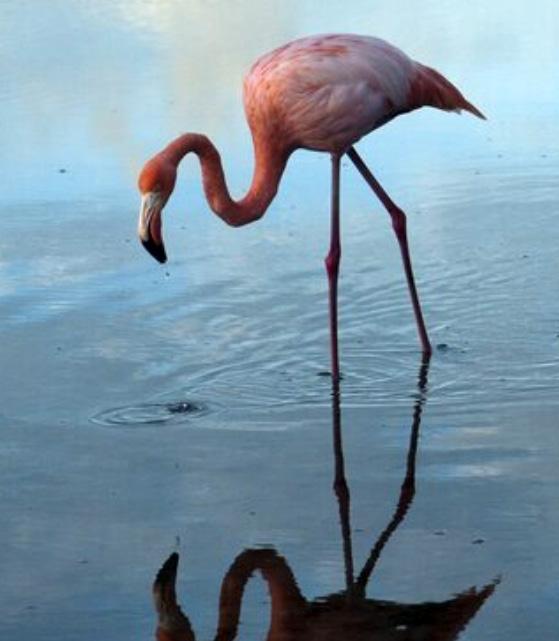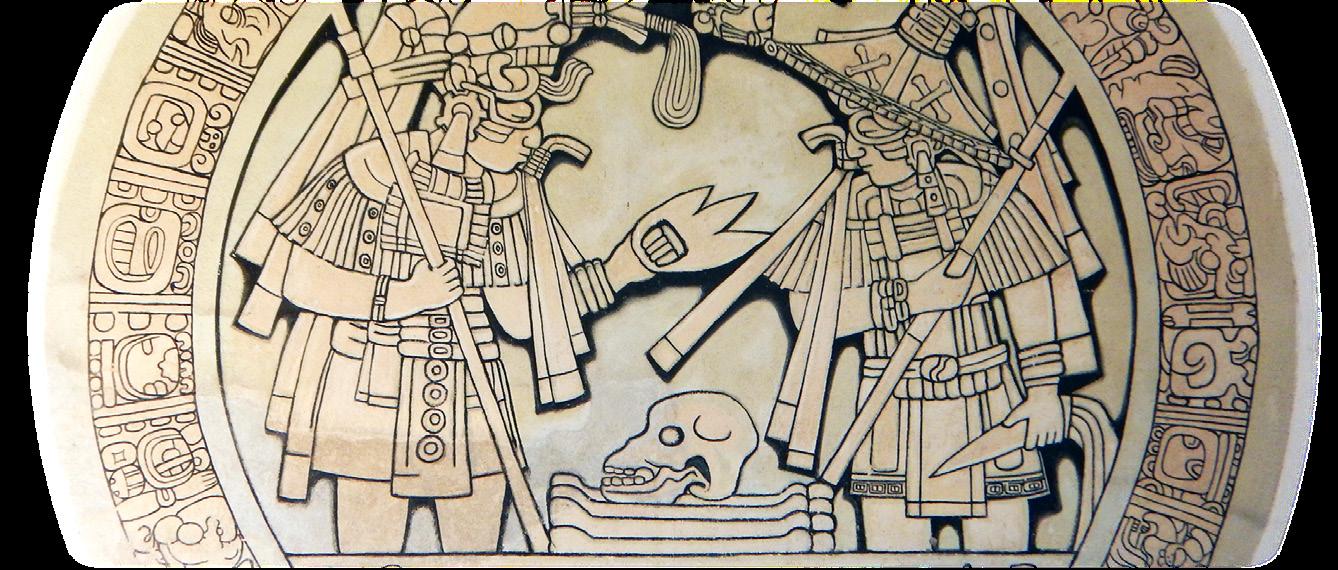
8 minute read
Tikal
The MAYAN EMPIRE Tour of El Petén, GUATEMALA
We arrived at the Tikal Inn at about 3:30pm, nestled in the jungle of the Parque Nacional Tikal and just outside the gates to the entrance to the famous Mayan archaeological site known as Tikal. The entrance gate of Tikal closes at 6pm and the tropical forest now welcomed the cooler humidity of this late October afternoon. Our passes were for 2 days, starting tomorrow but we were assured they would also be honored today as we purchased after them after 3pm and we were staying within the park. We left our bags in the modest room, and quickly darted to our destination with excitement.
Advertisement
A faint sunset guided our walk to the entrance of the ruins and within minutes we were in the Gran Plaza at the base of Templo I, Temple of the Jaquar Priest, circa 810 AD (see page 6).
Most of the tourists had left for the day and the surprising lack of this time of year offered opportunities for photographs void of humankind. Tikal has approximately 2,000 visitors per year, so I knew this was a special moment in my life. My expectations did not compare to the mystical atmosphere within this recovered historical site. It all compiled in perfection to my being here at this time year, at this time of day, and at this awesome place. In silence we gazed around, me imagining the scene in 800 AD when this Mayan civilization was at its peak of glory.



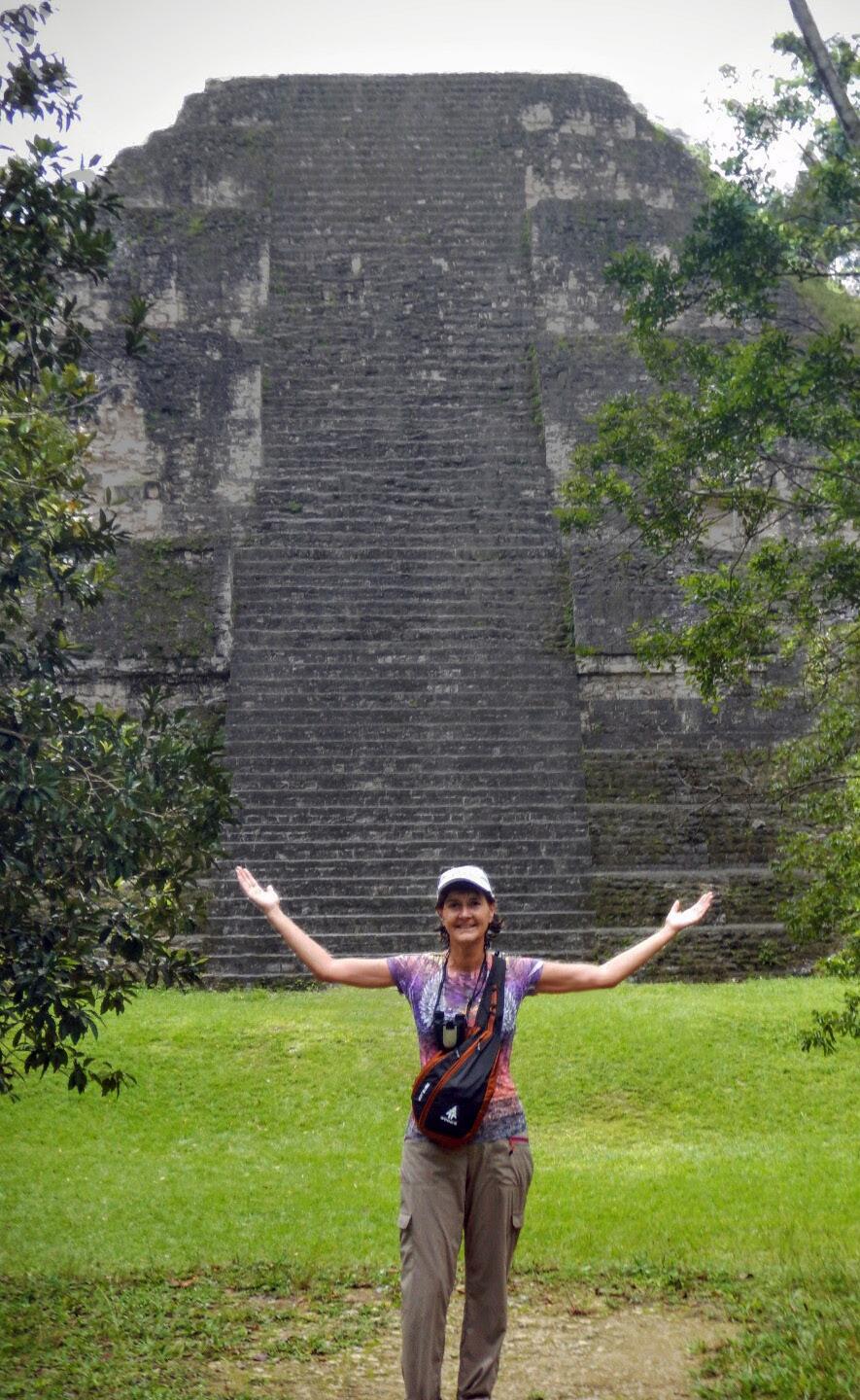
TAXI tour guide
Our tour to Tikal started via taxi coming from Melchor de Mencos, Guatemala at the Belize border after crossing from Benque Viejo del Carmen about 13kms outside San Ignacio. We left our Mexican rental car at the western Belize border and chose the first friendly Guatemalan taxi tour guide. Others were getting aboard mini-buses (collectivos), but our different decision opened our adventure by wavering degrees.
Having planned our trip, we expected a 2-hour drive to the park entrance, but our guide had a better plan and took us on a little detour along the Laguna Salpeten Macanche. It was a wonderful side trip to engage with the locals in their rural community off the main highway.
Jorge, didn’t just work it, he proved he really was friendly to everyone… and we shared many smiles and laughter en-route. After delivering us to our hotel, we confirmed arrangements with him for our return trip to the border again in two days. Jorge left happy, saying he had other places to show us on the way back to Belize.
That first evening at the ruins gave us an inspiring sneak peak of the next day. We didn’t venture too far from the Gran Plaza but let the quiet and awe seep into our souls. In our rush from the hotel, we now had the calm of being present in the presence. We had convened on the North Acropolis monument with the sun now setting on Temple III, the Temple of the Jaguar Priest. The glow of the sky now diffusing to dusk. Questions seeped into my mind…. how did they?, what did they? It was such a tranquil experience to consume.
The Tikal Inn has a restaurant with pool & patio access and at first, we were the only diners. Another couple joined and ordered from the menu having only three entrée options. The Inn was divided by levels of accommodations: with modern bungalows around this pool and a similar styled two-story hotel. And then an older cement building, ‘out back’ where we were quartered. The rooms there are accessed by a 75-metre jungle footpath and required our own light source. This structure has approximately 20 rooms, 10 per side, with an open exterior but covered wrap around porch. Beautiful wooden doors gained entry to a bedroom with a separate room for shower/toilet facility. It was clean and cared for but like the hotel’s sign, I imagined these remote and hidden rooms crumbling and covered with tropical over-growth during this next century. Lying there in the dark, in the bed, in the room, in the jungle of Guatemala…. feeling physically small and deep in the depths of no where… so far from home. It was a perfect night’s rest as we listened to the jungle sounds lull us to sleep.
Then returning the favour, the jungle sounds pleasantly woke us again for our day of adventure at this World Heritage UNESCO Site, proclaimed in 1979. The excavation of Tikal began in the late 1800s and opened to tourism around the 1960, with the museum opened in 1964. The entrance gates are open from 6am to 6pm and like the evening before we were on-site before the crowds arrived. We were however, greeted by a band of about fifty pizotes, also known as white nosed coatimundis, a raccoon like, long snouted, ringed tailed mammal native to Central America. Equipped with camera, hat, water bottle and good hiking shoes we set out on the groomed trails for our self guided tour of Tikal in daylight. The morning brightened fast, and the sunrise brought a different perspective to the monuments. Each encounter with a structure was more inspiring than the last.
Temple IV, the Temple of the Two-Headed Serpent is the tallest in Tikal and built around 740 AD. Temple IV is 65 metres in height and is one of the tallest pre-Columbian structures in the western hemisphere, along with The Pyramid of the Sun from Teotihuacan of the Aztec civilization in Mexico.
From the Gran Plaza, we headed north exploring our way around towards Temple IV at the western edge of the site.
We climbed many of the monuments because we could. The views from the top made tiny specs of the other visitors far below. Continuing south, we circled Mundo Perdido with its four staircases accessible on every side of this building. I re-enacted a photo I’d seen in the National Geographic of a person holding up the Great Pyramid of the Lost World (page 7). The tourists had arrived by bus loads, and we reveled at our well-planned evening and morning experiences.
Continuing passed Acropolis Sur is Templo Talud-Ta- blero, Sloping Panel Temple, which is the second largest complex in the Lost World and contained confirmation of trade and communications with Teotihuacan Aztecs in Mexico. It gives resolution to the similar symbolisms seen in Mayan and Azteca art forms. There is hieroglyphic evidence of the two cultures being political allies and even colleagues.
As we wandered the outskirts of the site it was nearing noon and starting to warm. The jungle suddenly erupted with a the canopy, down the mountain, and became a distance echo.

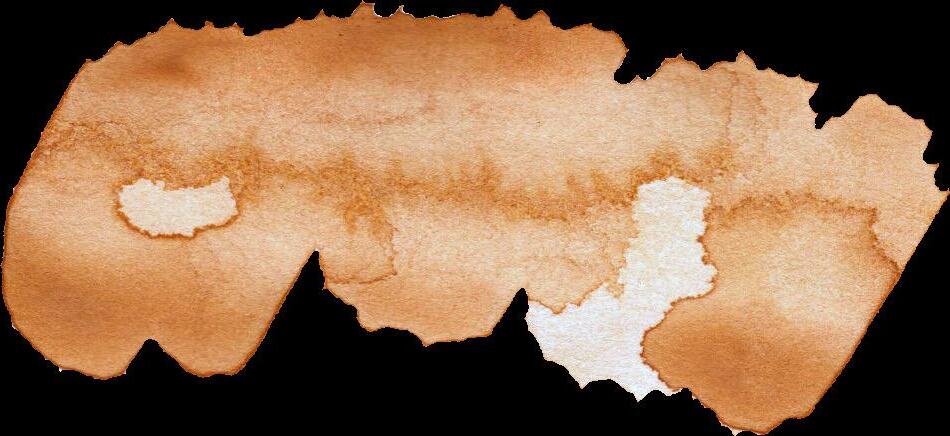
WHAT is now known about TIKAL (ti ak’al or “at the water hole”)

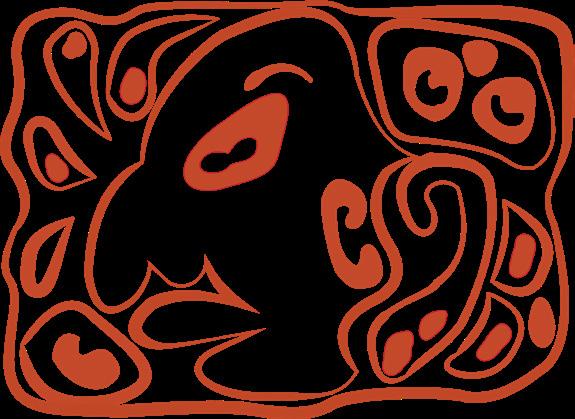



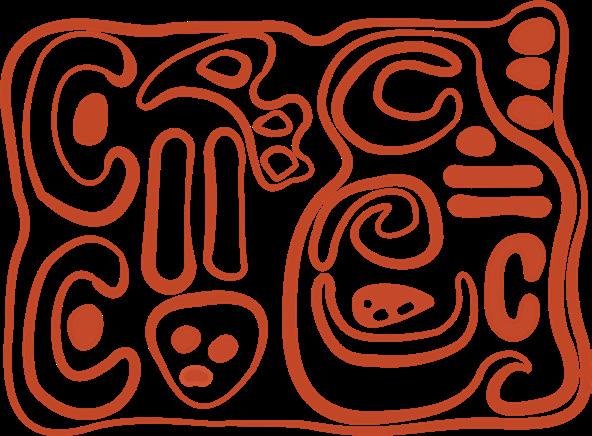

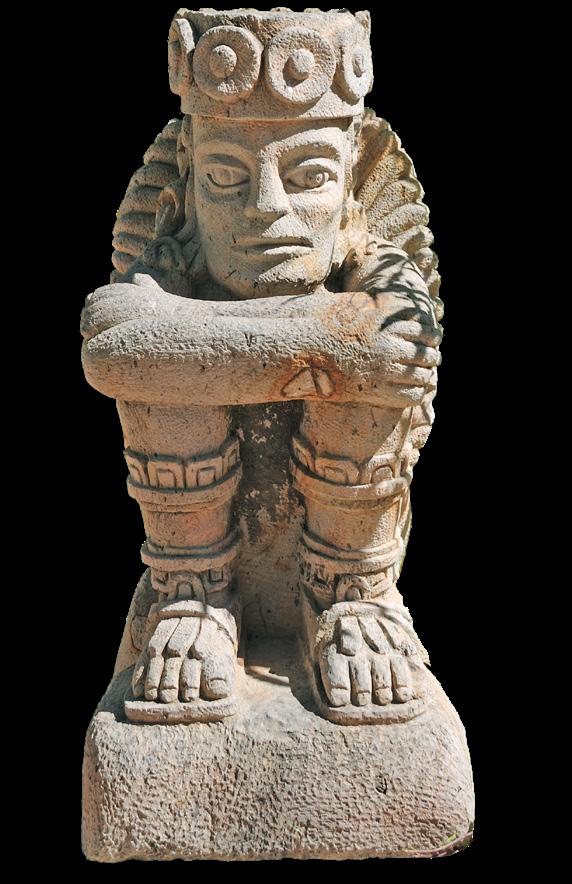


not-so-distant grunting troop of Howler Monkeys. We could hear them building, getting closer and directly heading our way. And then they were right over our heads. The noise was volcanic and their hooting and howls beat into my chest. Or is that my own heart? The deafening dark figures swung through the treetops above, with shimmering furry outlines illuminating their acrobatic silhouettes from the high sun overhead as it filtered through the leaves. Fast and furious they moved across
Although always rumored to exist, the white topped towers in the jungle, were first visited by the Commissioner Modesto Mendes and Governor Ambrosio Tut of Peten in 1848. Artist renderings were published in Germany in 1853 and European expeditions to Tikal began. Alfed P. Maudsley (British) was a pioneering archaeologist who came in 1881-82 to help clear, map, photograph and record the ruins which has continued through to 1984. The site has been used to film George Lucas’ Star Wars, A New Hope, 1977 and Eon Productions for James Bond’s Moonraker, 1979. There are more than 3000 structures still uncovered at Tikal within a 6.2 miles area.
David Stuart, at 18 years is the youngest person awarded the MacArthur Fellowship in 1984. He has done extensive work deciphering Mayan hieroglyphs and has even corrected some earlier numerology thoughts and other findings. The perception of empty cities such as Tikal, inhabited only by priest and spiritual seekers, has also been corrected by Stuart’s better understanding of these recorded symbols involving logo graphs (words) and syllables (sound units). The Mayan number system is based on 20 by lines and dots where another symbol stands for zero.
During the 16th century many of the Mayan codices
(books of fig bark) were destroyed in the Spanish conquest of Mesoamerica. There are only four which are known to still be in existence. Only recently, since the 1970s have Mayan hieroglyphs been understood. Approximately 85% of their hieroglyphs have now been translated with discoveries by leading Mayan epigrapher, David Stuart. They have now been able to chronicle 33 rulers at Tikal, including a queen, over a period of 800 years. Stuart has translated the sophisticated Mayan history to the more accurate accounts of war, sacrifice, and offerings as well as deciphering event dates and symbols describing Mayan cities and leaders. Other recently discovered artifacts and iconography found between 1979 and 1985, during the excavation from The Templo Talud-Tablero (Sloping Panel Temple) at the north end of the lower plaza in the Lost World zone, show a connection between Tikal and a Teotihuacan city. The location of this city is 630 miles away in Mexico and of a different culture (Aztec); which also thrived between 150 AD and 650 AD. Most scholars originally didn’t think the two civilizations were even aware of each other because of the distance.
The Lost World monuments, located southwest of the
Gran Plaza are dated from 500 BC to 250 AD and served as an observatory, then ceremonial and royal burial site. Recent evidence provides evidence of Mayan writings as early as 300 BC and a wall painting from 100 BC was discovered here.


The
Most of the edifices at Tikal were constructed between 250 and 900 AD with the latest stelae dated 869 AD. The latest ever discovered Mayan stelae is dated 909 AD. There were no stelae found at Tikal dated between 562 and 682 AD. Hieroglyphics found at Caracol (Belize), describe that they overpowered Tikal for those 100 years until it was reconquered again by Jasaw Chan K’awiil I.
Most of Tikal city has not yet been excavated and at its peak in about 750 AD, it’s presumed to have inhabited 6090,000 Mayan with a sprawl of over 45 square miles. We have only unearthed hillsides of monuments within 6.5 square miles. The possibilities within the unexcavated mounds, south of the Lost World is thus intriguing. And Stuart has a fondness for Tikal, due to its atmosphere as he says, “Tikal is simply one of the most overpowering archaeological sites in the world”. With each newfound Mayan symbol to decipher, brings new understandings of life in this well structured civilization. But then what happened to end the mighty Mayan empire? The end does not include any hieroglyphs to explain this, but most historians believe that a severe drought destroyed their already over-populated and starving society.
BACK to Belize
Jorge arrived on schedule and we were happy to see him. He took us on a sightseeing tour up through the El Peten mountain range on our way back from the historic ruins. He was emphatic about another archaeological site that was not as well known but just as spectacular called Acropolis North Yaxha. He guided us and explained certain areas of the site. Then we were left to ourselves to feel the mystic of a long ago civilization. We really were alone. There were very few tourists here, hence we highly recommend allowing yourself the extra time to visit this very inspiring and hidden Mayan ruin.
Blue footed boobies are well established on the Galápagos and named by their blue feet which shows evidence of their good health to attract a mate

Of the five merged volcanoes forming the Galápagos, the last eruption was Cumbre Volcano in 2018 on Isabella Island
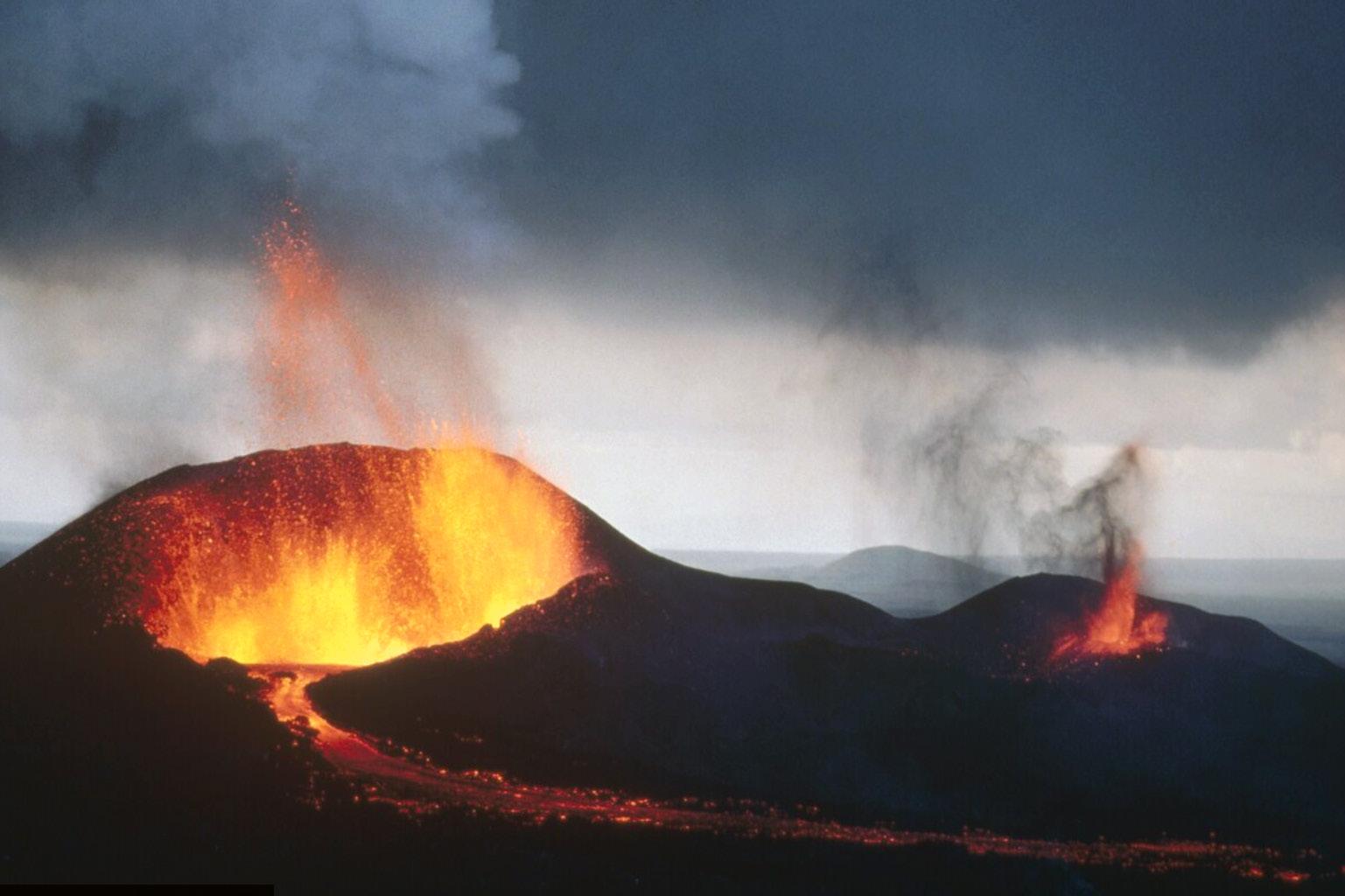
Darwin’s
This giant turtle was first recorded in 1907 and not seen again until 2015

Galápagos flamingos, like all other flamingos drink salt water as they have salt filters in their head
